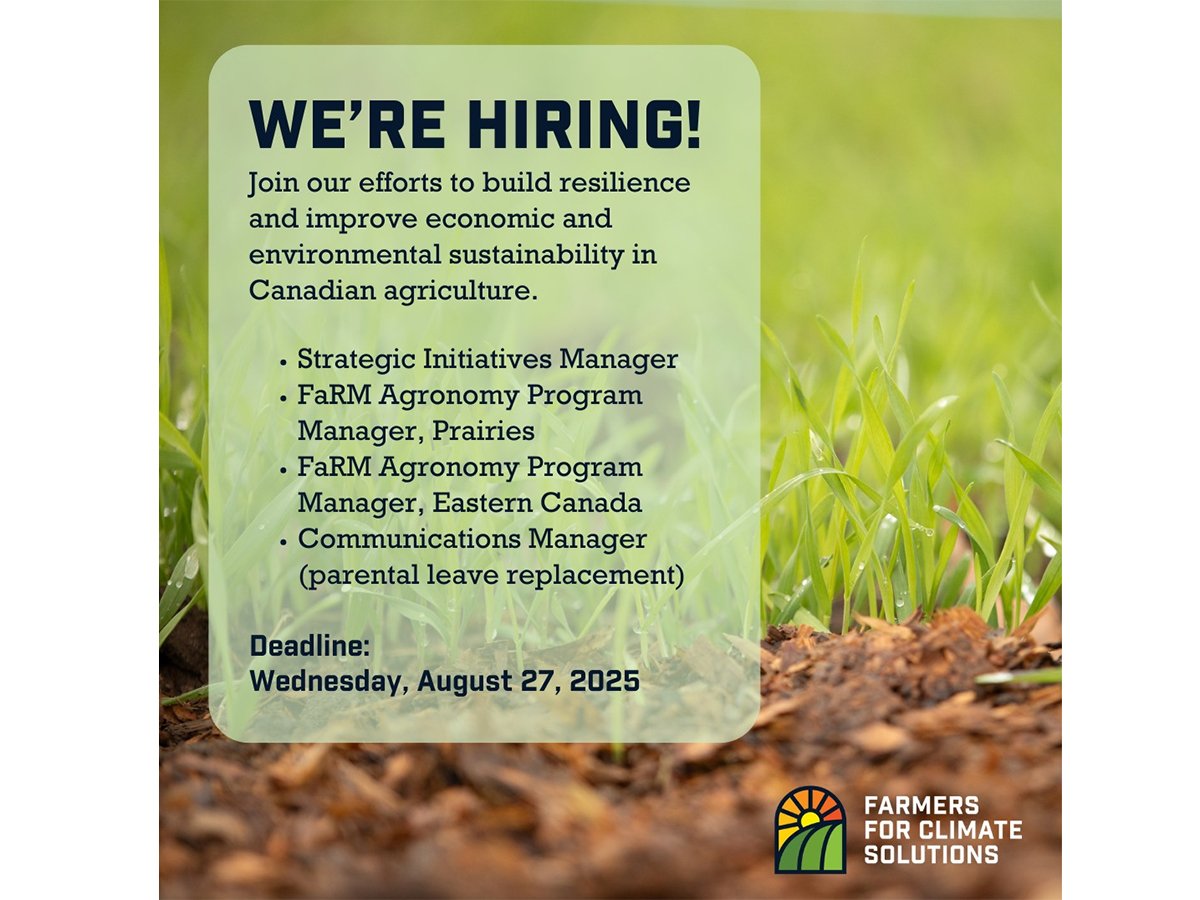Downtown office workers, civil servants, politicians and farmers chowed down on free barbecued pork May 11 at the Manitoba legislative grounds.
Other rallies were held at the House of Commons in Ottawa, and in Calgary and Edmonton.
Politicians, pork industry officials and consumers were putting their money where their mouths are, promoting Canadian pork as a safe product.
“The pork industry is delicious, nutritious and a little bit controversial right now and we have to reinforce the fact that it’s … a delicious product, a healthy product and we can’t let labels brand unfairly a product that is good for you and good for Manitoba’s economy,” said premier Gary Doer as he flipped slices of pork on a barbecue with Manitoba Pork Council chair Karl Kynoch.
Read Also

Environmental farm group has Ottawa’s attention
In 2021, Farmers for Climate Solutions published a report on how Canada should reduce emissions from agriculture. Not long after, the federal government implemented most of the recommendations in the report.
But that overwhelmingly positive view of pork and Canadian pigs does not exist everywhere as the H1N1 virus continues to spread, infecting more people in more countries and being partially blamed for deaths in a number of countries around the world, including Canada.
As of May 11, there were about 4,500 confirmed human cases of the new influenza strain in 29 countries and 53 deaths attributed to the virus.
Three human deaths have been attributed to H1N1 in the United States and an Alberta woman who died recently was sick with the virus, although health officials said she had other health problems.
A small number of people in all three prairie provinces have developed the illness, not all of whom had been to Mexico. The disease has been found in most Canadian provinces and most U.S. states.
Canada contained the only known herd of unintentionally infected pigs, near Rocky Mountain House in Alberta, until the weekend, when 500 pigs in the herd were exterminated under the guidance of the Canadian Food Inspection Agency.
Not all of those pigs were sick, but because the farm has been quarantined and the producer has run out of room to house them, the oldest animals have been slaughtered and sent for rendering.
Veterinary officials continue to monitor the herd.
While infection numbers are growing around the world and more countries are being added to the list of those with sick people, worldwide panic does not seem to be developing.
Officials have been expecting infection numbers to grow as testing catches up with the disease, and the death toll among humans is not sharply rising. In fact, many of the suspected human deaths in Mexico appear to have been caused by other factors, so the death toll numbers there have dropped.
In Canada, the flu scare appears to be abating.
In markets, hog prices tumbled when H1N1 appeared, but last week both hog and pork prices rebounded, hanging onto about two-thirds of losses in the nearby contract month, but regaining most of the losses in further-out months.
This suggests that commercial users, investors and speculators believe the situation will be short-lived.
Swine and pork trade has not been affected in major ways. China has said it will not accept pork from Alberta, infected U.S. states, Mexico or other infected places.
Russia has also partially blocked U.S. and Canadian pork and pigs.
But most of Canada’s trading partners continue to buy Canadian pork.
The Canadian government is pushing both China and Russia to roll back their restrictions because world health officials say pork is not considered a disease transmission danger.
Pork transportation and slaughter does not appear to be seriously affected by the Alberta farm infection, although there are reports of pork buyers expressing worries about buying Alberta pigs and pork while the public is concerned.
Hog producers are hoping the worst of the reaction to the disease is past and that better times will soon arrive.
“Both price and demand have been affected tremendously,” said Manitoba hog producer and packer owner Claude Vielfaure.
“There’s been quite a slowdown on people wanting to buy meat and live pigs, so obviously the situation has been pretty hard on producers for the last couple of weeks.”
Doer said he and the other Canadian premiers with major hog herds, including Alberta’s Ed Stelmach, have been discussing how to help the struggling hog industry, which was already reeling because of the impact of country-of-origin labelling.
“This is a work in progress,” he said during the barbecue.
“We want to reverse it as soon as we can, but we’re in the middle of it right now.”















